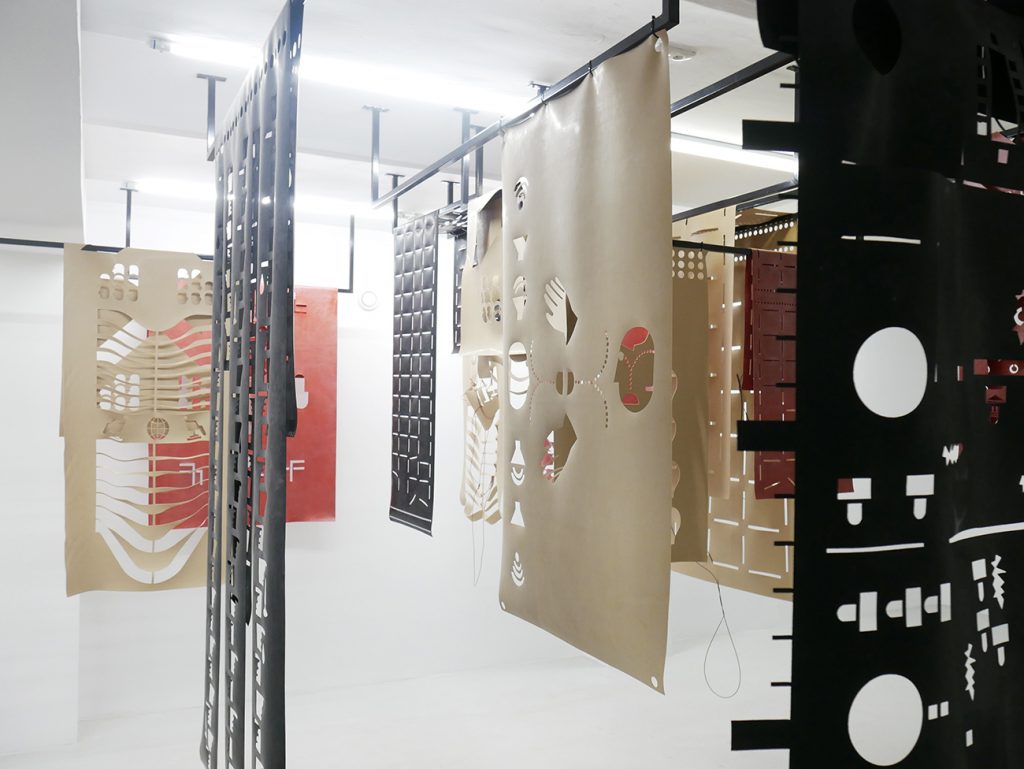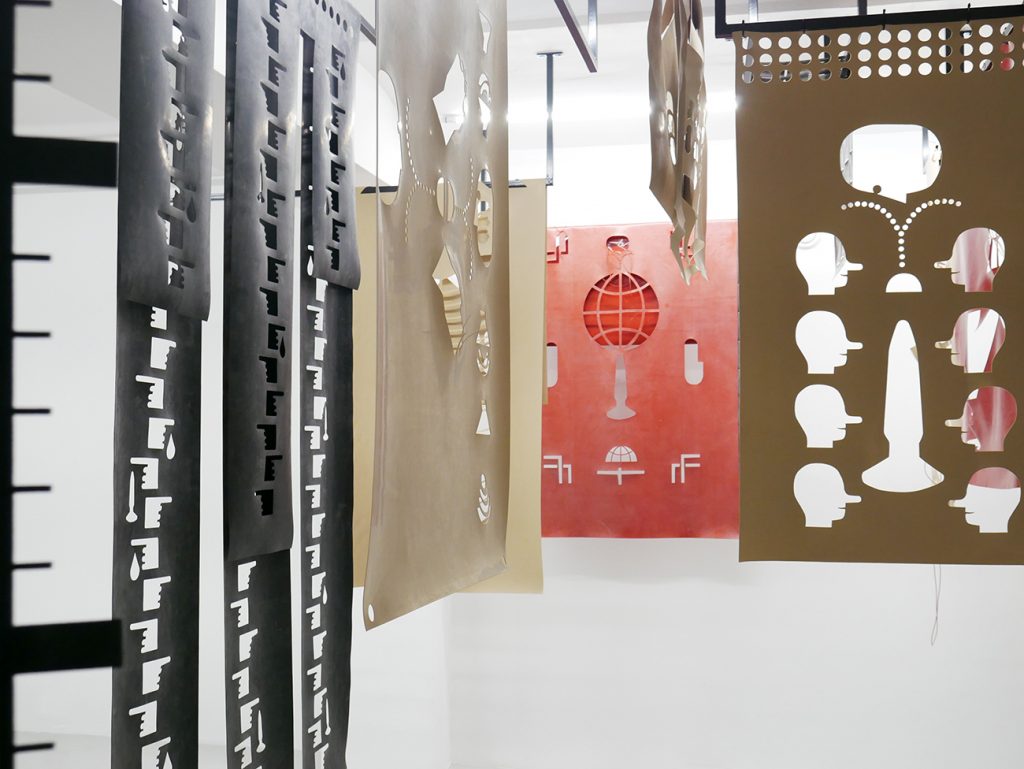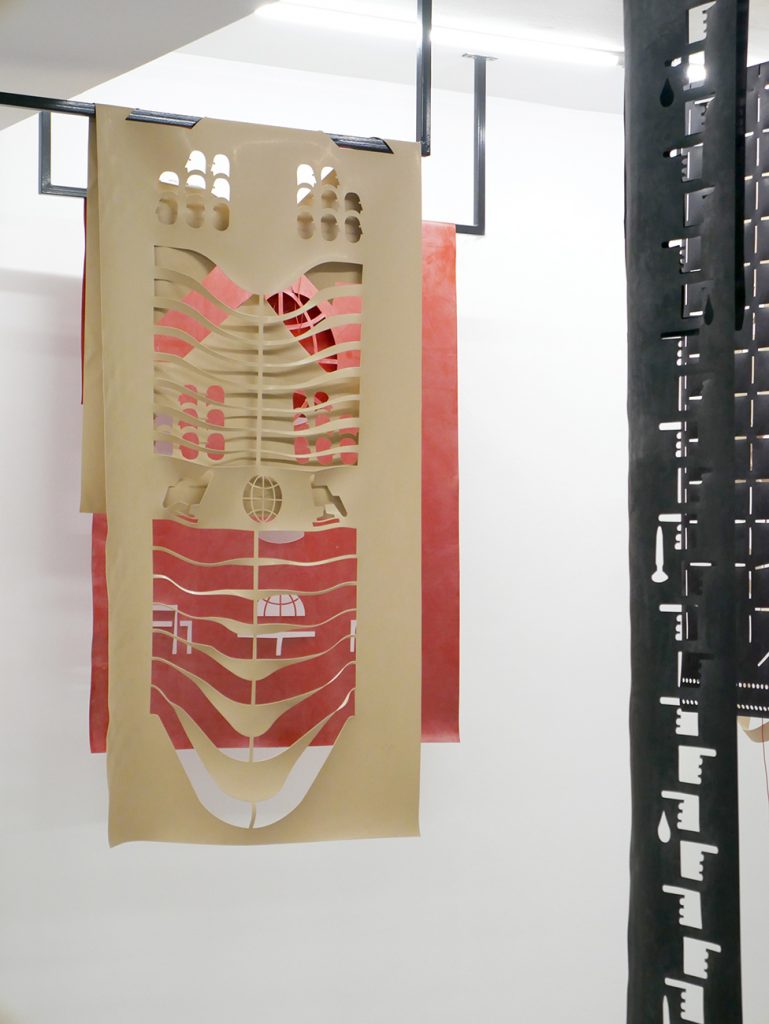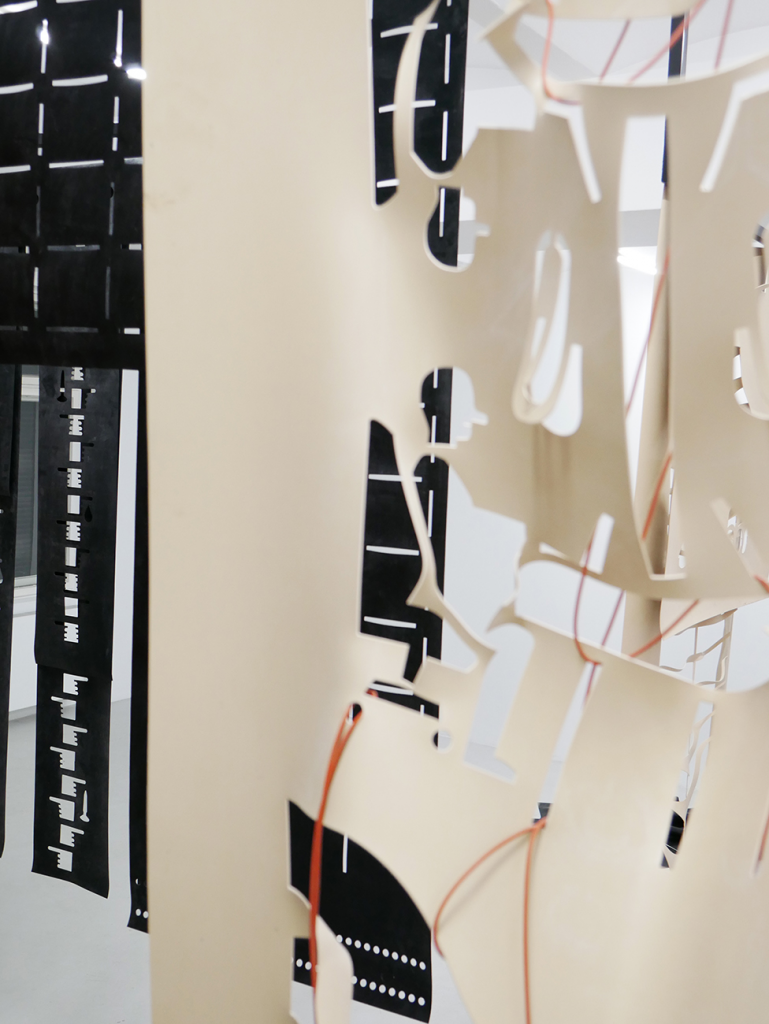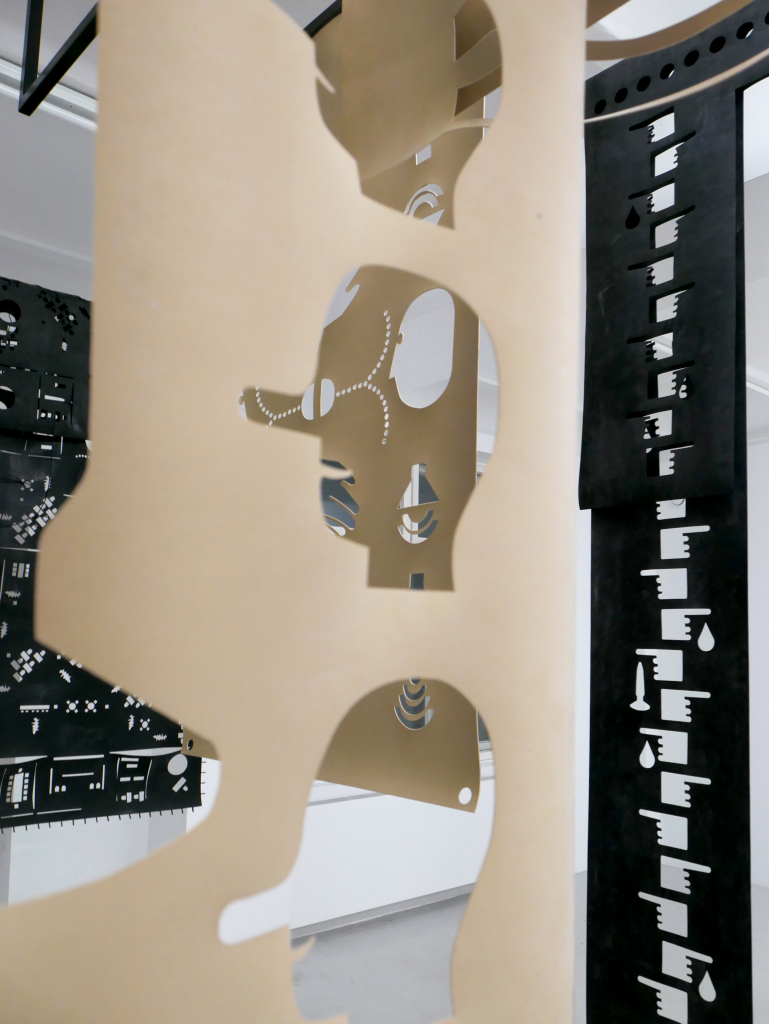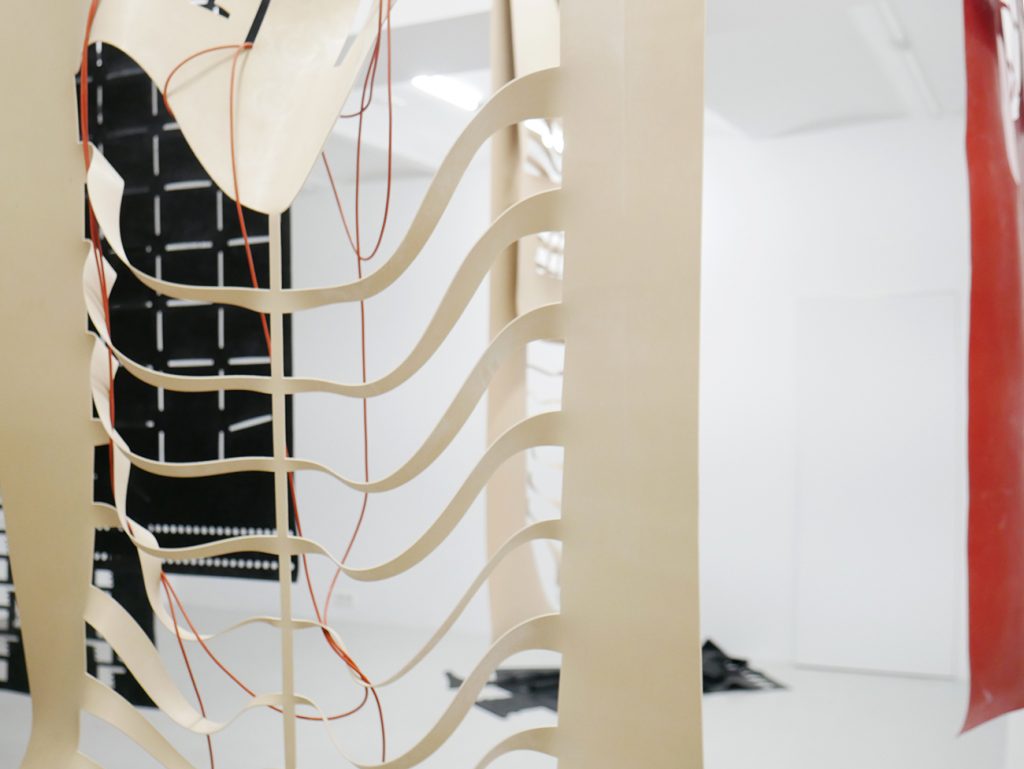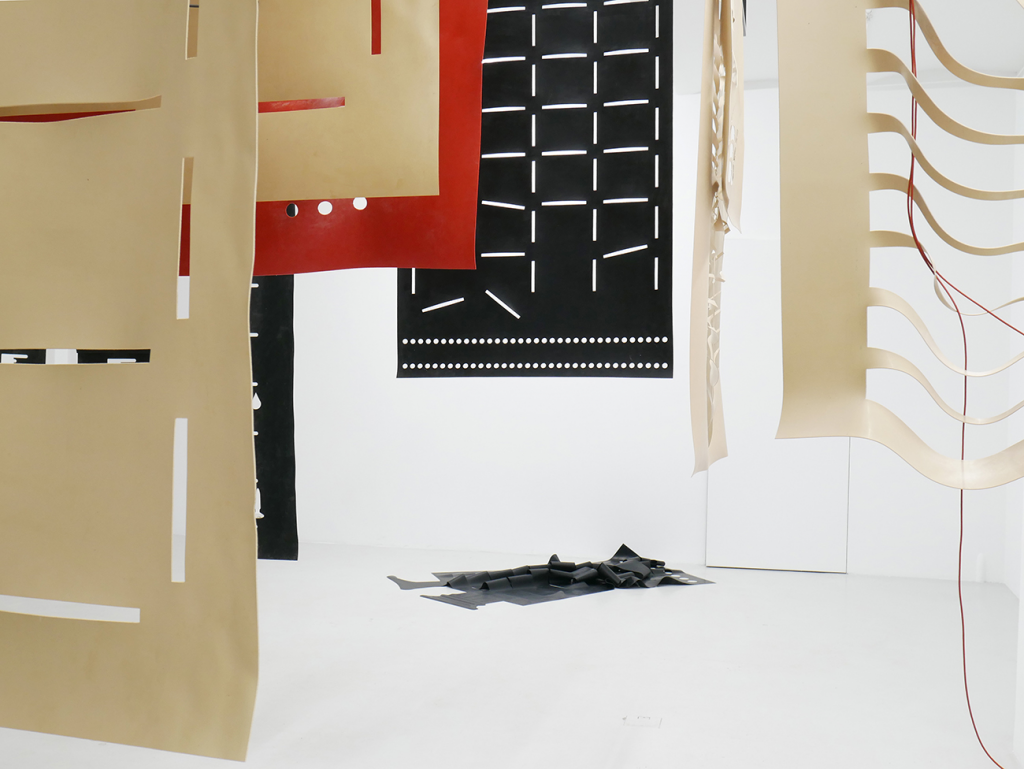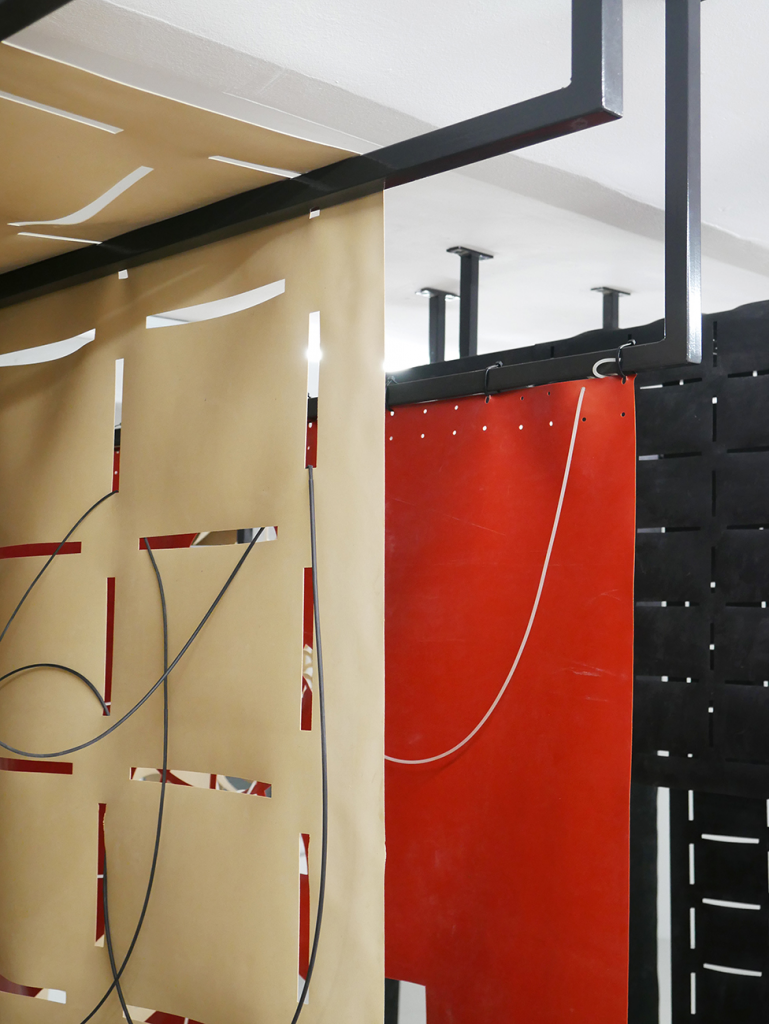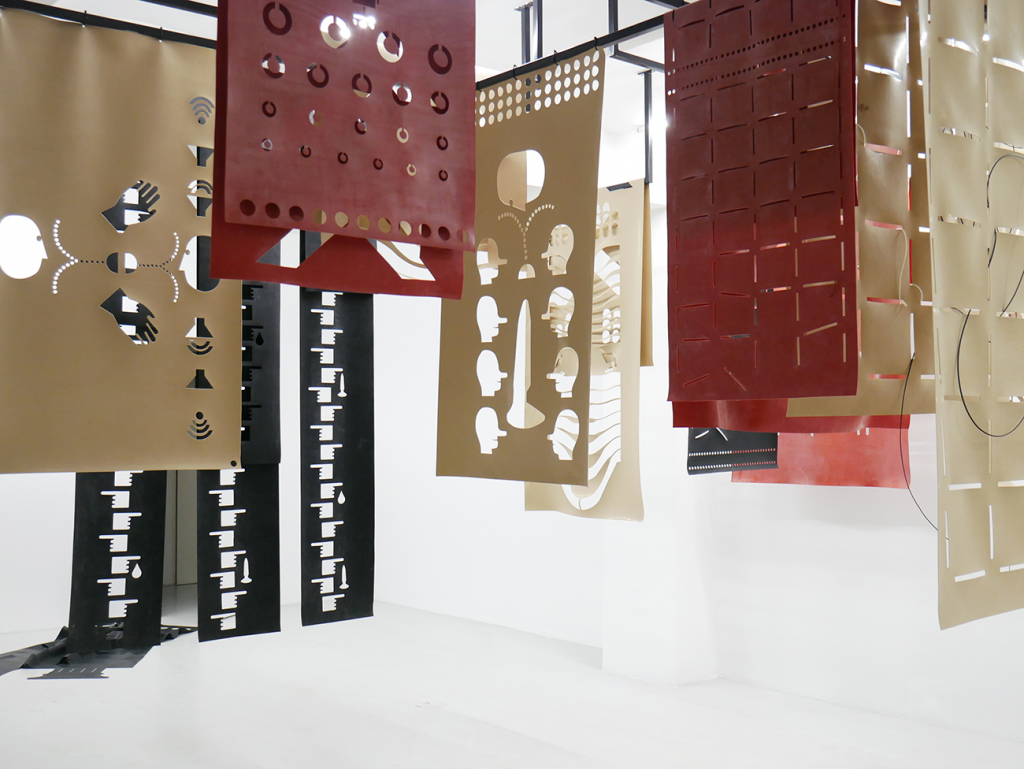
Kwatera główna nosi w sobie głowę. Stoi na niej lub dotyka nią sufitu. Powiela się, grupuje i rozwarstwia. Wewnątrz rozdzielni zadań jej robocze ciągi konstruują własną architekturę sprzężenia. Rozmieszczenie biurek, ich wielkość i naświetlenie określają hierarchiczną zależność.
W artykule Linia (z maja 1921r.) artysta1 German Karginow, „Rodczenko”, Wydawnictwa Artystyczne i Filmowe, Warszawa 1981, s. 89 pisze: „Człowiek się nudzi, pracę uważa za ponure, nudne i puste spędzanie czasu, a jego życie z małymi wyjątkami, wydaje się monotonne i puste, bo nie docenia w sobie istoty zdolnej do konstruowania, budowania i burzenia”. W obecnym czasie budowanie i burzenie przejęły korpo-struktury. W pojedynkę niewiele możemy zbudować czy unicestwić. Jednostce została już tylko konstrukcja, najczęściej dostępna z przedrostkiem „de-” i bez możliwości zwrotu. Konstruujemy zatem wspólną przestrzeń, a przede wszystkim zależności w jej obszarze. To jedynie jest nam dostępne jako materiał oporu wobec owej monotonii pracy.
W czasie tych stu lat rozmaite Biura Strategii Marek i Promocji Sektorów wyuczyły się jak zwierać szeregi w trybach dociskania pracowników. Wyższe piętra wymagają więcej, w zamian dodając metry sześcienne i kwadratowe. Zakładane przez strukturę awanse niezmiennie wymagają kolejnego naciągnięcia materii oraz perforacji następnych odcinków czasu. Tu świadomość kształtuje rozrastająca się przestrzeń. Rozgrywa się runda: SelfDesk vs Helpdesk.
Wypieranie bliżej nieokreślonych przeczuć, które mamy wobec grupowania nas w zorganizowanych przestrzeniach wspólnych, wzmaga napięcie i sytuacyjny dyskomfort. Podziw i pożądanie budzą się w grupach i przez nie też umierają. Trwamy w przyjętej kanwie zachowań, korzystając jednak z każdej możliwości ujścia. Pragniemy innych, podpatrując ich przez otwory mebli czy biurek, jednocześnie bojąc się cudzych spojrzeń na sobie samym. Połączenie jest w tym samym stopniu przymusowe i niemożliwe, co upragnione i wyobrażone.
Kwaterą główną jest każde biuro. Usytuowanie galerii w bezpośredniej jego bliskości i symbiotyczność obu przestrzeni nie są tu bez znaczenia. Instalacja Headquarters konstruuje się poprzez materiał, którego specyfika zbiega się z analizowanym zagadnieniem. Zbudowana na zasadzie przenośni i odwrócenia perspektywy, skłania do patrzenia na wskroś. Kolejne otwarcia i kształty tworzą przeploty poszczególnych wzorów. W tym świecie spłaszcza się wymiary, tak by uzyskać maksymalizację komunikatu i jednoznaczność wytycznych. Docelowy kształt odpada, zostaje wykrojnik w inwersji wyciętego. Przez otwór widać kolejne warstwy i wiązania usiłujące utrzymać jako taką strukturę całości.
The headquarter carries a head within. It stands on it or rises touching the ceiling with it. It duplicates itself, forms groups and splits into delaminated layers. Inside the task allocation unit, its working strings and arrays construct their own architecture of feedback. The placement of the desks, their size and illumination determine hierarchical dependency.
In the article entitled The Line (dated May 1921) the artist writes1 German Karginov, Rodczenko, Wydawnictwa Artystyczne i Filmowe, Warsaw 1981, p. 89: “The human is bored, considers work a dreary, tedious and futile spending of time, while their life—with minor exceptions—appears monotonous and void, for they fail to recognize in themselves an entity capable of constructing, building, and destroying.” Today, the building and the destroying have been taken over by corpostructures. Alone, there is little one can build or demolish. Only construction is left to the individual, most often available with “de-“ as a prefix, and no return options. Thus, we construct the shared space, the dependencies within its bounds above all. This is the sole thing we have access to as the material of resistance against that monotony of work.
Over the hundred years, various Offices for Brand Strategy and Sector Promotion have learned how to tighten the tolerances in the cogwheels of wringing the employee dry. The upper floors demand more, adding cubic or square metres in return. The promotion provided for in the structure invariably requires the material to be stretched yet again and further sections of time to be perforated. Here, the consciousness is moulded by the expanding space. This is the SelfDesk vs Helpdesk round being played.
The repression of vague forebodings we may have with regard to being penned in groups in the organized shared space exacerbates the tension and situational discomfort. Admiration and desires are awoken and aroused in the groups, only to die and expire because of them. We persist in the established pattern of behaviours, but grasp at every opportunity of release. We desire others, peeping at them through the apertures of the furniture and desks, simultaneously dreading the gaze of another resting on ourselves. The bonding connection is as forcible and impossible as it is yearned for and imagined.
Each and every office is a headquarter. The fact that the gallery is located in its immediate vicinity and the symbiotism of both spaces are not without significance. The installation Headquarters constructs itself by virtue of the material whose inherent properties dovetail with the analyzed issue. Built around a metaphor and reversed perspective, it compels one to look through to the other side. The successive openings and shapes create the interlacing weft of particular patterns. The dimensions are flattened in this world to maximize the communication and unequivocality of the guidelines. The target shape is discarded, leaving the blanking die in the inversion of what has been cut out. The hole offers a glimpse of the consecutive layers and couplings which strive to sustain the vicarious structure more or less intact.
Headquarters, Agnieszka Grodzińska
14.05 – 04.06.2021
Galeria Skala, Poznań
Tekst: Agnieszka Grodzińska i Jagna Domżalska
Tłumaczenie: Szymon Nowak
Współpraca graficzna: Cezary Tyliński
Zdjęcia: Agnieszka Grodzińska
